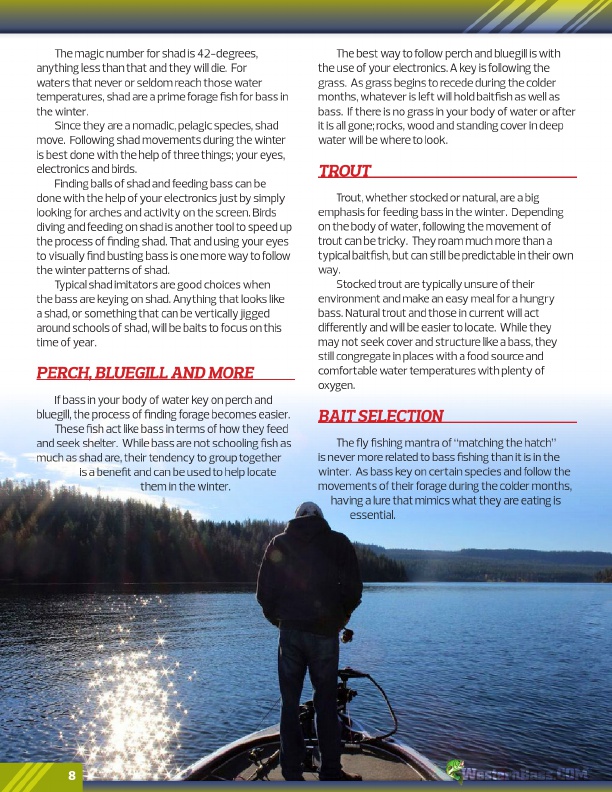
®
The magic number for shad is 42-degrees, anything less than that and they will die. For waters that never or seldom reach those water temperatures, shad are a prime forage fish for bass in the winter.
Since they are a nomadic, pelagic species, shad move. Following shad movements during the winter is best done with the help of three things; your eyes, electronics and birds.
Finding balls of shad and feeding bass can be done with the help of your electronics just by simply looking for arches and activity on the screen. Birds diving and feeding on shad is another tool to speed up the process of finding shad. That and using your eyes to visually find busting bass is one more way to follow the winter patterns of shad.
Typical shad imitators are good choices when the bass are keying on shad. Anything that looks like a shad, or something that can be vertically jigged around schools of shad, will be baits to focus on this time of year.
PERCH, BLUEGILL AND MORE
If bass in your body of water key on perch and bluegill, the process of finding forage becomes easier.
These fish act like bass in terms of how they feed and seek shelter. While bass are not schooling fish as much as shad are, their tendency to group together
is a benefit and can be used to help locate
them in the winter.
The best way to follow perch and bluegill is with the use of your electronics. A key is following the grass. As grass begins to recede during the colder months, whatever is left will hold baitfish as well as bass. If there is no grass in your body of water or after it is all gone; rocks, wood and standing cover in deep water will be where to look.
TROUT
Trout, whether stocked or natural, are a big emphasis for feeding bass in the winter. Depending on the body of water, following the movement of trout can be tricky. They roam much more than a typical baitfish, but can still be predictable in their own way.
Stocked trout are typically unsure of their environment and make an easy meal for a hungry bass. Natural trout and those in current will act differently and will be easier to locate. While they may not seek cover and structure like a bass, they still congregate in places with a food source and comfortable water temperatures with plenty of oxygen.
BAIT SELECTION
The fly fishing mantra of “matching the hatch” is never more related to bass fishing than it is in the winter. As bass key on certain species and follow the movements of their forage during the colder months,
having a lure that mimics what they are eating is
essential.
8